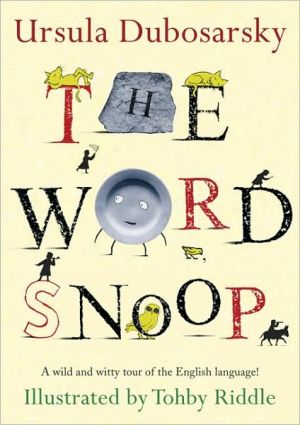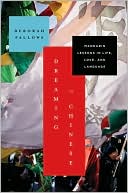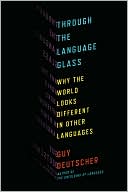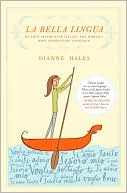The Word Snoop
Meet the Word Snoop. She's dashing and daring and witty as can be-and no one knows more about the evolution of the English language than she does. Luckily, she's spilling her secrets in this gem of a book. From the first alphabet in 4000 BC, to anagrams, palindromes, and modern-day text messages, readers will learn all about the fascinating twists and turns our fair language has taken to become what it is today.\ With playful black-and-white illustrations, riddles to solve, and codes to...
Search in google:
Meet the Word Snoop. She's dashing and daring and witty as can be—and no one knows more about the evolution of the English language than she does. Luckily, she's spilling her secrets in this gem of a book. From the first alphabet in 4000 BC, to anagrams, palindromes, and modern-day text messages, readers will learn all about the fascinating twists and turns our fair language has taken to become what it is today. With playful black-and-white illustrations, riddles to solve, and codes to break, The Word Snoop is definitive proof that words can spark the imagination and are anything but dull. This is a book for every aspiring writer, and every true reader. Publishers Weekly Using word puzzles, codes, puns and a wealth of information, Australian author Dubosarsky (The Red Shoe) explores the enigma that is the English language. The eponymous Word Snoop leads an entertaining adventure that researches the peoples and influences that have shaped English over the past 1,500 years ("I sometimes think English is like a big old wall that people have been scribbling on for centuries," quips the snoop). Beginning with an overview of early writing (cuneiform, hieroglyphics) and alphabets before moving on to the ins and outs of English, the snoop's reader-directed narration offers playful and engaging explanations of punctuation and silent letters ("They're a bit like stray cats that wander into the house") among other elements of language, including nicknames, onomatopoeia, clichés, Internet slang and pig latin. The book is a useful tool for teachers, but should also delight language enthusiasts of all ages. Riddle's cartoons provide humorous flourishes as well as drive home certain points. The clever approach grants insight into the complexity and beauty of communication and the inherent power of language. Ages 10-up. (July)Copyright © Reed Business Information, a division of Reed Elsevier Inc. All rights reserved.
\ Publishers WeeklyUsing word puzzles, codes, puns and a wealth of information, Australian author Dubosarsky (The Red Shoe) explores the enigma that is the English language. The eponymous Word Snoop leads an entertaining adventure that researches the peoples and influences that have shaped English over the past 1,500 years ("I sometimes think English is like a big old wall that people have been scribbling on for centuries," quips the snoop). Beginning with an overview of early writing (cuneiform, hieroglyphics) and alphabets before moving on to the ins and outs of English, the snoop's reader-directed narration offers playful and engaging explanations of punctuation and silent letters ("They're a bit like stray cats that wander into the house") among other elements of language, including nicknames, onomatopoeia, clichés, Internet slang and pig latin. The book is a useful tool for teachers, but should also delight language enthusiasts of all ages. Riddle's cartoons provide humorous flourishes as well as drive home certain points. The clever approach grants insight into the complexity and beauty of communication and the inherent power of language. Ages 10-up. (July)\ Copyright © Reed Business Information, a division of Reed Elsevier Inc. All rights reserved.\ \ \ \ \ Horn BookThe Word Snoop's enthusiasm . . . is so infectious that readers will be hard-pressed to resist her invitations to join the fun.\ \ \ Children's LiteratureThis book about the history and eccentricities of the English language is both funny and fascinating. Told from the point of view of "The Word Snoop," readers begin with a journey back in time to the origins of the first alphabet and the changes made to the alphabet in subsequent years. Next, using the historical framework, the Word Snoop explains why sometimes the English language is so strange. She then dives into punctuation usage, letters, and all sorts of intriguing anomalies such as anagrams, puns, palindromes, mondegreens, and malapropisms. To wrap up, the Word Snoop devotes a chapter to "English of the future" including telegramese and texting. Throughout the book, the author includes language examples and activities, as well as an ongoing puzzle to solve at the end of each chapter. The author's voice is engaging and fresh for young readers, and the passages are clear and concise. Teachers of students in grades three through eight can find numerous antidotes, activities, and explanations to use in the classroom, and they will likely learn as much about the wacky English language as their students. Reviewer: Jody Little\ \ \ \ \ VOYAWhoever heard of an interrobang? (It is punctuation that combines a question mark and an exclamation mark.) Did you know that Shakespeare used eight times as many colons as writers would nowadays? Lipograms, tautology, and mondegreens . . . what are these? With subject matter that could be deathly dull, the author makes learning about grammar, words, and the history of the English language fun. Readers are asked to be word snoops or detectives while joining the author on her search, starting with an introduction about the first alphabet and the development of the English language and then moving on to punctuation, word derivations, literary language, and plain old fun stuff like nicknames, texting, and pig Latin. Some intriguing chapter titles include "Why is English So Strange?" "Hmmm, I Wonder What You're Really Saying," and "Who Likes Playing Games?" At the end of each section, the author sets up an activity for the reader such as writing something in secret code or figuring out what a particular anagram means. The beginning of the book presents a time line of events concerning the English language, such as the invention of the alphabet, the development of the first printing press, and when the first dictionary was published. The end of the book has answers to all the quizzes and games from the chapters, topping off an engaging first-person narrative that presents an entertaining adventure for readers. Reviewer: Leslie Wolfson\ \ \ \ \ School Library JournalGr 5–9—This "wild and witty tour of the English language" is a fun read for kids who love words. The author writes in the voice of a detective who is working to uncover all the mysteries of the language. Beginning with a history of the alphabet, chapters discuss punctuation, word puzzlers (anagrams, lipograms, etc.), palindromes, code languages (Pig Latin, rebuses, rhyming slang), puns and tongue twisters, euphemisms and clichés, nicknames and eponyms, and texting. Each section ends with a puzzle or a code that, when solved, spells out a secret message. The author's tone is playful throughout. She offers many examples to clarify some esoteric points of grammar. The pages are illustrated with amusing line drawings and silhouettes. The silly manner makes what can be a dry subject lighthearted and interesting. Readers will also increase their knowledge about how English evolved to what it is today, learn some word games, and discover that LOL and texting have very old roots.—Geri Diorio, The Ridgefield Library, CT\ \ \ \ \ Kirkus ReviewsFascinating facts about words and the English language abound in this giddy Australian import (The Word Spy, 2008), narrated by the exuberant "Word Snoop," who discloses her discoveries to her "dear readers" in a chatty, conspiratorial style. Those who haven't pondered how the world's first alphabet developed (or even the word "alphabet" itself) will be wowed, and trivia buffs will adore learning that quotation marks are nicknamed "goose feet" in Iceland and what the letters in the acronym "laser" stands for. Anagrams, palindromes and oxymorons are demystified, as are mondegreens, Yogiisms and Tom Swifties. Solid-red, chapter-demarcating pages featuring the silhouette of a donkey-riding, telescope-wielding child contribute to the book's distinctly old-fashioned design and sensibility, but the Snoop's eclectic cultural references range from Albert Camus to Lauren Myracle, 17th-century Norwegian poets to the Simpsons-and the final chapter analyzes texting (so like haiku!) and emoticons. Wordplay and cryptography aficionados will enjoy the intermittent coded puzzles that culminate in one final message. Riddle's simple cartoons, often visual puns, enhance the playful nature of this thoroughly engaging, well-crafted primer. (timeline, glossary, code key) (Nonfiction. 10 & up)\ \








